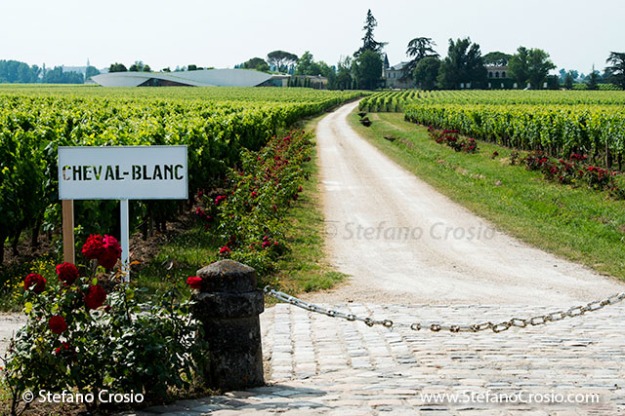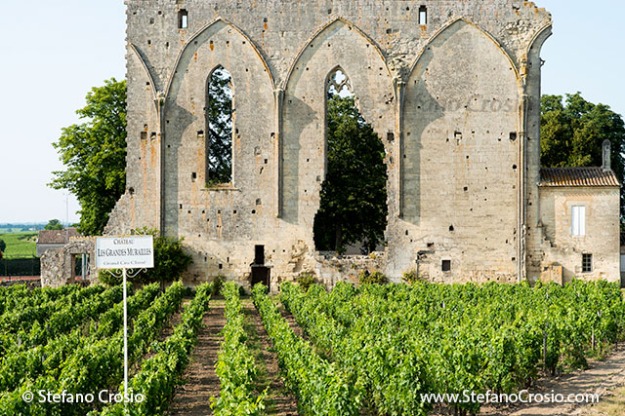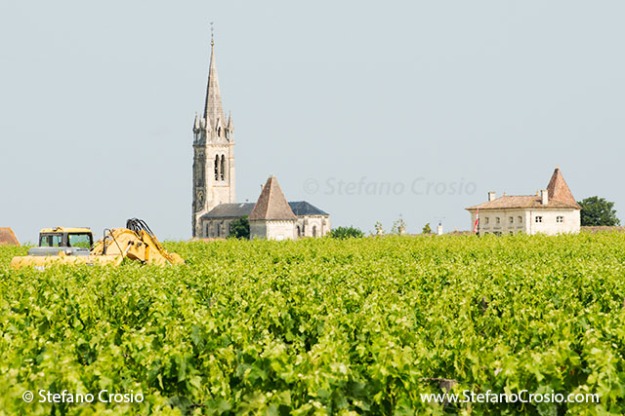First off, you may be wondering: what about chapters 3 and 4 in the Saint Emilion series??? Well, those have only been published on Flora’s Table as they were not wine related nor were they specifically about photography, so if you have not seen them and you are interested in finding out about Saint Emilion sweet treats (macarons and cannelés) and the place we stayed at during our Saint Emilion visit, just head over there and see for yourself! 😉
Now, on previous posts we have talked about the town of Saint Emilion and one of its churches – it is about time that we start talking about wine. This post will provide a general overview of the area from a wine standpoint, while future posts will focus on a few chateaux.

As we said in the introductory post of this series, Saint Emilion is a town that is located in the Libournais area, on the right bank of the Dordogne River, not far from Bordeaux. From a wine standpoint, the area surrounding the town of Saint Emilion is divided into several different appellations (known as “AOC” – in French, “Appelation d’Origine Controléè“).
One slightly confusing thing to bear in mind is that Saint Emilion AOC and Saint Emilion Grand Cru AOC are two different appellations that for the most part comprise the same territory. However, the regulations of the latter are stricter than the former as they require lower production yields and a 12-month minimum aging period. So, a bottle that is labeled “Saint Emilion Grand Cru” only indicates that it has been produced under the rules of that AOC, but not necessarily that it is one of the Grands Crus that are part of the Saint Emilion wine classification (more on this later), which instead are identified as Grands Crus Classés or Premiers Grands Crus Classés, depending on their ranking.

The two largely overlapping appellations of Saint Emilion AOC and Saint Emilion Grand Cru AOC encompass a territory of, respectively, 5,600 and over 4,000 HA where the dominating grape variety is Merlot, beside Cabernet Franc and Cabernet Sauvignon. The average annual production is in the ballpark of 235,000 HL for Saint Emilion AOC and 150,000 HL for Saint Emilion Grand Cru AOC.

As we alluded to above, in 1954 the Winemaking Syndicate of Saint Emilion decided to compile a classification of the best estates (or Chateaux) in the Saint Emilion Grand Cru AOC based on criteria such as quality, sales and renown: this classification was published in 1955 (which is why it is often referred to as the “1955 Classification“) and is supposed to be revised and updated every 10 years, although in fact the updates have been more frequent (since inception, it has been updated in 1959, 1969, 1986, 1996 and 2012).

The 1955 Classification divided the estates that made the cut into the following three tiers (in parentheses you can find the number of chateaux in each tier, based on the 2012 revision of the 1955 Classification):
- Premier Grand Cru Classé A (4)
- Premier Grand Cru Classé B (14)
- Grand Cru Classé (64)
Originally, there were only two Chateaux in the first tier of the 1955 Classification: Chateau Ausone and Chateau Cheval Blanc, while two more estates have been promoted to the Olympus of the Saint Emilion wines in the context of the 2012 revision of the 1955 Classification: Chateau Angelus and Chateau Pavie.
If you are interested in finding out more about the 1955 Classification, on this Website you can find the complete list of the estates comprised in each of the three tiers of the classification.
For completeness, bear in mind that in the Saint Emilion area there are also four satellite appellations, as follows: Saint-Georges-Saint-Emilion AOC, Montagne-Saint-Emilion AOC, Puisseguin-Saint-Emilion AOC and Lussac-Saint-Emilion AOC.
Another famous appellation in the greater Saint Emilion area is the adjacent Pomerol AOC, a small 770 HA Merlot-centric appellation which is home (among other premium estates) of the world-famous, super-exclusive, very rare and über-pricey Petrus. The estates in the Pomerol AOC were not considered for the purposes of the 1955 Classification (which, as we said, was limited to those in the Saint Emilion Grand Cru AOC): this explains why Petrus is not part of it.




